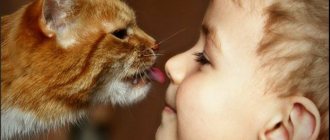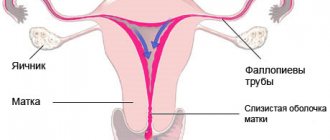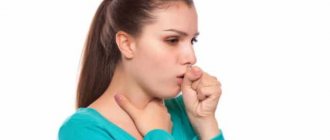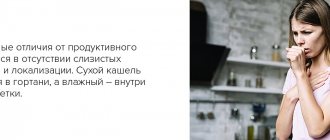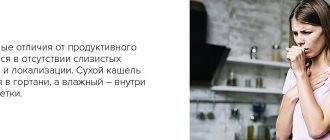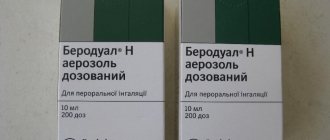The beginning of winter is an eternal romance: couples huddling together in a vain attempt to stay warm, the first snowstorms, frost on the eyelashes and coughing coming from all sides. In order not to succumb to the epidemic of diseases, it is better to understand in advance how to counter these winter “trends” in the form of respiratory diseases.
Nebulizers come to the rescue here. It was they who replaced the pots with potato broth, with the help of which our grandmothers so touchingly treated coughs.
There are a great variety of nebulizers on the Internet; you can’t do without a cheat sheet. They differ in operating principles, ease of use, price, and most importantly, in what medications they can be compatible with.
The closest thing to the ill-fated pans are steam nebulizers. Although even in this case, the efficiency is clearly superior to the old-fashioned method. The medicine here reaches only the upper parts of the nasopharynx, so devices of this type are suitable for the treatment of a limited number of diseases.
The most common type of nebulizer can be called compressor. Such devices are constant winners in the price-quality category. In addition, ultrasonic and mesh nebulizers are also available on the market. We will also talk about them in detail in this analysis.
Use of inhalations
- For the prevention of respiratory diseases and moisturizing the mucous membrane of the respiratory tract.
- Treatment of bronchial asthma, chronic bronchitis, cystic fibrosis, COPD.
- In the complex treatment of rhinitis, sinusitis, pharyngitis, tracheitis, bronchitis.
- For children and the elderly.
- For patients with severe illnesses.
Causes and treatment of cough
Benefits of inhalation
- Direct delivery of the drug to the area of inflammation.
- Pure substance without impurities.
- Possibility to introduce any amount of dosed substance.
- Fast, instant action of the drug.
- Fewer side effects, since the drug does not enter the blood.
- Permitted for use in infancy, in postoperative conditions, and in coma.
- Maximum efficiency at the lowest cost.
Contraindications
Inhalations are not recommended for:
- elevated body temperature;
- cardiovascular failure;
- nosebleeds;
- emphysema;
- oncological diseases.
What diseases can be treated with a nebulizer?
The drug sprayed by an inhaler begins to act almost immediately, which makes it possible to use nebulizers, first of all, for the treatment of diseases that require immediate intervention - an attack of bronchial asthma, allergies.
Another group of diseases for which inhalations are simply necessary are chronic inflammatory processes of the respiratory tract, such as chronic rhinitis, chronic bronchitis, bronchial asthma, chronic broncho-obstructive pulmonary disease, cystic fibrosis, etc.
But their scope of application is not limited to this. They are good for the treatment of acute respiratory diseases, laryngitis, rhinitis, pharyngitis, fungal infections of the upper respiratory tract, and the immune system.
Inhalers help with occupational diseases of singers, teachers, miners, and chemists.
Types of inhalers
The inhalation therapy method is based on the penetration of medicinal substances into the respiratory tract in the form of an aerosol, that is, tiny particles suspended in a gaseous medium. If aerosol is inhaled:
- particles larger than 5 microns settle in the oral cavity and upper respiratory tract;
- particles from 1 to 5 microns settle in the lower respiratory tract;
- particles with a diameter less than 1 micron are exhaled back.
Inhalers are divided into types depending on the mechanism of particle formation.
Ultrasonic nebulizers
In ultrasonic inhalers, the drug is atomized due to high-frequency vibration of piezoelectric crystals.
Research shows that ultrasonic inhalations are effective due to the spraying of not only the medicinal substance itself, but also negatively charged particles, which have an additional anti-inflammatory effect.
However, this type of inhaler has a drawback: exposure to ultrasound destroys many medications (for example, antibiotics and phlegm thinners).
Compressor inhalers
A compressor inhaler converts the drug into a fine aerosol using compressed air from a compressor.
The compressor inhaler is considered the most effective for affecting all parts of the respiratory tract. Its great advantage is the creation of an aerosol suspension with a very small particle size of the drug substance. You can use any medications that are intended for inhalation.
Steam inhalers
Based on the evaporation of medicinal substances under the influence of high temperatures.
Flaws:
- you can get a burn to the mucous membrane;
- affect only the upper respiratory tract;
- at high heating temperatures they reduce the biological activity of medicinal substances.
In medical practice, two types of inhalers are usually used: compressor and ultrasonic.
Top 10 rating according to KP
Experts' Choice
Omron Comp Air NE-C28
Omron Comp Air NE-C28. Photo: Omron
A serious Japanese product operating on the compressor principle, suitable for both home and professional use.
It is good for absolutely everything: quality characteristics (when choosing a nebulizer, it is important to pay attention to the average particle size into which the drug is broken down and the speed of their spraying), reliability, ease of use, and, of course, price.
It’s hard to argue with Japanese practicality: all contact parts of the device can be easily removed and disinfected, the inhalation chamber is quite voluminous, and a bag for carrying and storing equipment is included.
Of the minuses: None of the compressor nebulizers can boast of silence during operation, but here the noise level is still above average. In addition, this device is quite heavy (the weight declared by the manufacturer is 1.9 kg), so it is not necessary to consider it as a mobile option for pick-up.
show more
B.Well WN-112 K
B.Well wn-112 k. Photo: B.Well
This nebulizer features a breath-activated chamber and a long hose that connects to the device. In fact, this allows the patient to be in a place and position that is convenient for him. The noise level in this case is also not so important. Such an indicator as particle size is also decent here, so B.Well may well become a lifesaver. Moreover, in economy class, you won’t have to overpay for this miracle.
Of the minuses: The flow rate of this nebulizer is not the highest, this suggests that the effectiveness in the fight against complex diseases may be reduced, although it will cope with acute respiratory viral infections, acute respiratory infections and allergies with a bang. In addition, the device has a limited operating time of 30 minutes, sometimes this figure, alas, is not enough.
show more
Flaem Nuova Delphinus F1000
Flaem Nuova Delphinus F1000. Photo: Flaem
Surely not everyone is familiar with the Italian brand Flaem Nuova, but believe me, behind these words there is actually a hundred-year history of the production of medical equipment. This compressor inhaler is equipped with virtually everything you could need. There is an abundance of different attachments, and, importantly, adjustment of the particle level.
Of the minuses: this nebulizer is quite heavy (2.1 kg), so it should be considered as a good stationary option.
show more
Berdsk Romashka-2
Berdsk Romashka-2. Photo: Berdsk
If your option is “cheap and cheerful,” then you should take a closer look at this steam inhaler. It will surely cope with colds, in addition, it can be used for cosmetic procedures. It is simple and reliable to use; any herbal decoctions are suitable for it as medicines.
Of the minuses: steam inhalers are not suitable for treating all diseases, plus you need to remember that it is better not to let a person with cardiovascular diseases approach them.
show more
Good to know
How to choose the perfect oral irrigator
AND UN-232
AND UN-232. Photo: And-Omron
This ultrasonic beauty is reliable, quite quiet and compact. But like any nebulizer of this type, it is not compatible with all types of medications, this is the main difficulty when choosing an ultrasound device. But at the same time, there are a lot of advantages: good average particle size, excellent speed, and ease of care and disinfection. Another feature of this device can be safely called the ability to heat medicines and water for thermal inhalation. This is just for those who, with a runny nose and viral diseases, choose old school with nostalgia.
Of the minuses: This nebulizer does not have a hose, so inhalations can only be done at the table. Unfortunately, you won’t be able to get comfortable in a chair with a book.
show more
Medisana USC 541005.0
Medisana USC 541005.0. Photo: Medisana USC
Another Japanese in our review. This ultrasonic nebulizer is truly pocket-sized: it weighs only 300 grams and runs on 4 AA batteries. Agree, this is just a story about the fact that inhalation can be done everywhere: both on the road and while walking. What could be more convenient?
Of the minuses: due to the compactness of the device, manufacturers had to sacrifice time of continuous use. It is limited to 15 minutes.
Omron Micro Air NE-U22
Omron Micro Air NE-U22. Photo: Omron
Mesh nebulizers are portable and silent. This perfect combination will certainly captivate anyone. This device, for example, weighs only 97 grams, it can work both from the mains and from batteries. In addition, the NE-U22's continuous use time is as much as two hours, which is significantly longer than devices with similar characteristics. If you're looking for a nebulizer and don't care how much it costs, trust me, this is the perfect option.
Of the minuses: only the price. Mesh nebulizers are the most expensive devices on the market and only you can decide whether you are willing to pay that much for convenience.
AND UN-233AC-M
AND UN-233AC-M. Photo: And-Omron
This device can easily compete with its Omron counterpart. In terms of portability and convenience, it is in no way inferior to it. But it wins in price, on average in the market, this baby is 2-2.5 times cheaper. Therefore, if you are choosing a device that will lie on the far top shelf and be used from time to time, AND may well become it.
Of the minuses: not a high particle flow rate, which means, in some cases, not very high efficiency.
show more
Little Doctor LD-207U
Little Doctor LD-207U. Photo: Little Doctor
Another inexpensive colleague, the Little Doctor mesh nebulizer, is also quite convenient and easy to use. This model has the ability to operate both autonomously and from a network; it is quite light and silent. A set of batteries is enough for about 6-10 full inhalations - so this nebulizer may well win in the category of best travel option. In addition, the device can be tilted at an angle of 45 degrees, which allows inhalation even while lying down.
Of the minuses: the network adapter costs to be purchased separately.
show more
Xiaomi Andon VP-M3A.0
Xiaomi Andon VP-M3A.0. Photo: Xiaomi
First, the guys from Xiaomi started working on phones, then on laptops, then on vacuum cleaners, and now on medical equipment. It must be said that they were a resounding success everywhere. Likewise, when developing a nebulizer, they were able to take into account all the wishes of customers and made a stylish, silent, compact device that, at a low price, has better characteristics than other market giants.
Of the minuses: here we can only talk about distrust of the brand. But how fair this assessment is is up to you to decide.
show more
How to perform inhalations
- Inhalation is carried out no earlier than 1-1.5 hours after a meal or after physical activity.
- Smoking before and after inhalation is prohibited.
- It is advisable to gargle with plain water before inhalation.
- For diseases of the nose and nasopharynx, inhalation and exhalation are done through the nose using nasal cannulas.
- For diseases of the lower respiratory tract (bronchi, trachea), you need to use a special mouthpiece. During the procedure, you need to take a deep breath, hold your breath for a couple of seconds, and then exhale through your nose.
Inhalations for the prevention of colds and ARVI: are they effective?
The most effective way to prevent ARVI is still a proper and varied diet, taking vitamins and minerals, sleeping patterns, and a sufficient level of physical activity. However, inhalations with saline solution can also help in prevention during periods of seasonal increases in incidence. It is recommended to purchase saline solution at a pharmacy rather than prepare it yourself.
Inhalations are an effective and simple way to help a child cope with ARVI, colds, coughs and runny nose. To ensure that the procedure is safe and comfortable, and brings only positive results, choose the right mesh nebulizer for home use and use medications prescribed by your doctor for treatment. Be healthy!
Inhalations with bromhexine
What does bromhexine help with?
Bromhexine is a mucolytic and expectorant drug. The drug is used for bronchitis, pneumonia, laryngitis, pharyngitis, tuberculosis, bronchial asthma. It can be used for both dry and wet coughs. It is advisable to start taking bromhexine in the early stages of the disease to get the best effect.
Cough preparations by group
Is it possible to do inhalations with bromhexine?
According to the instructions, bromhexine is taken orally, and there is no official information that it should be used for inhalation, but sometimes it is used by inhalation at home.
The closest analogue of bromhexine, ambroxol (Ambrobene, Lazolvan, etc.), is sold specifically in the form of a solution for inhalation. In any case, before using this or that drug, be sure to consult a specialist.
Which bromhexine is suitable for inhalation?
As an example, let’s take the form: bromhexine drops 8 mg/ml. Before inhalation, it must be diluted with distilled water in a 1:1 ratio.
If you take another solution of bromhexine, where the dose of the drug is 4 mg per 5 ml, then the total volume for an adult will be 20 ml. Whereas the inhaler chamber usually has a maximum capacity of 5 ml.
Bromhexine solution for inhalation
Dosage for preparing the solution:
- adults: 8 mg, which corresponds to 1 ml of bromhexine drops;
- children over 10 years old: 4 mg;
- children from 6 to 10 years old, 2 mg;
- children under 6 years of age in a dose of up to 2 mg;
- Toddlers should not use this form due to the high concentrations of substances it contains.
Inhalation is carried out twice a day. Course of treatment: 5 days.
How to prepare the solution
Dilute the drug with distilled water (water for injection) in a 1:1 ratio. Then the prepared solution is heated to a temperature of 36-38 degrees, but no more and no less, because high and low temperatures of the solution negatively affect the inflammatory process. At a temperature of 25-28 degrees it is an irritant for the bronchi due to the cold factor. And if the solution is 39-40 degrees, then it has a detrimental effect on the components of the medicine: such a temperature destroys the medicine.
Nebulizer for children. When and how to use it
Homemade inhalation systems based on the “saucepan-potato-towel” principle have been replaced by modern drugs and devices for the treatment of respiratory diseases.
One such device that is popular among a large number of parents is a nebulizer.
A nebulizer sprays liquid medicine into a gas (aerosol) that can be easily inhaled by children of all ages.
If a child is afraid to use a regular nebulizer, you can use a child one (it looks like a toy - in the form of animals, cars, and so on). This greatly facilitates the treatment process - it calms and entertains the child.
In what cases should a nebulizer be used?
Talk to your pediatrician about using a nebulizer for your child if you notice any of the following symptoms in your child:
- wheezing (wheezing) breathing, distant whistles
- cough
- shortness of breath, shortness of breath
- rapid breathing
- chest pain
- labored breathing
- delayed recovery in acute bronchitis
What can you add to a nebulizer?
- saline solution (NaCl 0.9%) (also used to dilute other substances)
- hormonal agents for inhalation (for example, budesonide for stenosing laryngotracheitis, bronchial asthma, chronic obstructive pulmonary disease)
- bronchodilators for inhalation (for example, ipratropium bromide/fenoterol, salbutamol for bronchospasm, bronchial asthma, chronic obstructive pulmonary disease)
- in some cases, adrenaline (for stenosing laryngotracheitis)
- in some cases, antibiotics (for cystic fibrosis, bronchiectasis)
- in some cases, mucolytics (for cystic fibrosis, bronchiectasis)
- in some cases, hypertonic solution (for cystic fibrosis, bronchiectasis)
What should not be added to the nebulizer
These substances are not intended for inhalation; they are dangerous due to poisoning and/or bronchospasm:
- essential oils
- herbal extracts and decoctions
- syrups
- mineral water
- antiseptic drugs (for example, miramistin, chlorhexidine)
What's important to keep in mind
The nebulizer is used to treat certain respiratory conditions (in which coughing is common), but with the necessary frequent use, parents can find it to be an effective treatment for any condition that involves coughing. Don't self-medicate!
Tips for using a nebulizer
Before using the device, show your child how to inhale. Let your child look at the device, hold it, and press buttons. Do not force the child to breathe through the device for a long time, 7-10 minutes is enough, otherwise he will refuse repeated procedures.
For younger children, use a mask. Make sure that the child is breathing correctly and that the mask fits to the face. If the mask is at a distance of only one centimeter, the effect of the medicine is sharply reduced. If necessary, use ties to strengthen the mask, but it would be better for you to control the inhalation process.
In the case of prescribed inhalation therapy, it is not recommended to cancel inhalations through a nebulizer due to high temperature; refusal of inhalations can harm the child.
Do not inhale immediately after eating.
Do not use a nebulizer while sleeping: The process of nebulizing while sleeping may seem convenient, but this process has no effect if it is done while sleeping, since breathing movements are different during sleep and wakefulness. It will be difficult for the medicine to get where it needs to go if your mouth is closed and your breathing is slow.
Do not sterilize nebulizer parts using heat. In most cases, the parts are made of plastic or other materials that can become deformed when exposed to heat. Instead, you must strictly adhere to the instructions that come with the equipment.
And lastly, don’t be afraid of inhalations. When it comes to children, they tend to follow their parents' emotions. If you have a positive attitude towards inhalations, then children will find this procedure easy and exciting. It is important not to criticize the inhalation process in front of children and to ensure that the process goes smoothly.
When should you contact your healthcare provider?
Call your healthcare provider if you have the following symptoms:
- Breathing is more difficult than usual.
- You have pain or pressure in your chest.
- The heartbeat is irregular, either faster or slower than normal.
- You have problems swallowing or speaking.
- You have signs of an allergic reaction, such as: rash, hives (itchy raised bumps on the skin) or itching;
- redness, swelling, peeling skin, or blistering;
- whistling when breathing;
- tightness in the chest or throat;
- unusually hoarse voice (low and hoarse);
- swelling of the mouth, face, lips, tongue, or throat.
- numbness or tingling around or inside the mouth that does not go away;
- blue or gray color of lips, nails or skin;
If you have any questions, contact the health care professional who prescribed your medication.
If you are an MSK patient and need to see a healthcare provider after 5:00 pm, on weekends, or on holidays, call 212-639-2000. to come back to the beginning
What to do while using nebulized lidocaine
Tell your healthcare team that you are using nebulized lidocaine hydrochloride 2% solution. This includes your doctors, nurses, pharmacists and dentists.
Medicines such as lidocaine can cause a blood disorder called methemoglobinemia. Your risk of developing methemoglobinemia may be higher if you have glucose-6-phosphate dehydrogenase deficiency (G6PD), heart problems, or lung problems.
Tell your healthcare provider if you have ever been diagnosed with methemoglobinemia.
to come back to the beginning
At what age can you use an inhaler?
Before using the device, you should know at what age the inhaler can be used.
The nebulizer can be used by children from a very early age. Pediatricians advise using such devices even when treating infants. For young children, purchase an inhaler with convenient attachments (mouthpiece, nose tip, small face mask). Some brands sell a children's mask separately.
How to choose an inhaler for children
- To choose an inhaler for a child, carefully read the instructions before purchasing. The main parameter is safe operation. Therefore, children under one year old should not use steam devices: it is difficult for babies to cough up mucus.
- For a small child, it is better to choose an ultrasonic or mesh inhaler, as these devices are silent and have temperature control.
- An element of entertainment that distracts from the procedure is also important. Therefore, many manufacturers offer nebulizers in the form of toys with bright and colorful designs.
- Treatment of children should be carried out under the strict supervision of adults. In this case, the procedure should not last longer than 5 minutes.
